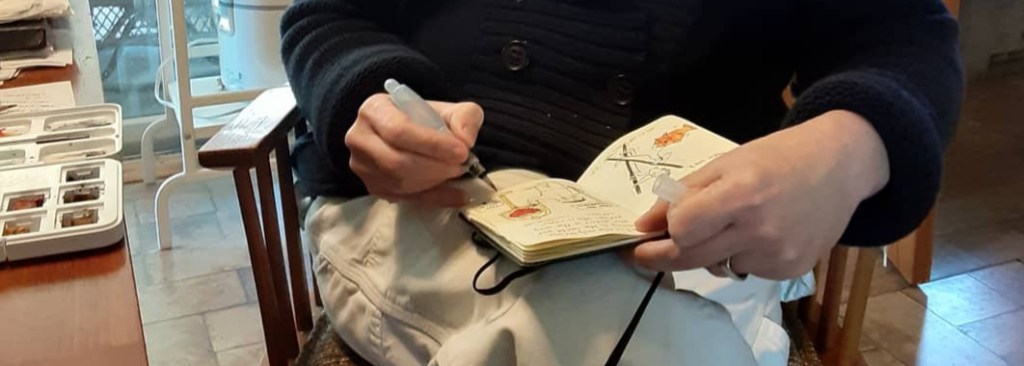creative life
-
the point of it all
As per my last post I’ve been starting new projects in my studio. I’m also having some down time to rest and recharge. While starting new projects I’m keeping in mind my studio statement. Here it is on a 2 by 3 inch paper thumbtacked to my art studio wall. I jokingly say that my…
-
Dear Readers art exhibit statement
My new exhibit this year is titled “Dear Readers” and is book/reading themed. As I’ve worked this last year towards this new one-person fine art exhibit at Burnt Bridge Cellars, that will open June 7 in Vancouver WA, I’ve written lots of hand-written notes in my sketchbooks, on random slips of paper, on post-it notes…
-
art snacks
Some time back I read an article in my local newspaper about teaching kids to snack healthy and to learn to trust their body’s cues about food. Since then I’ve been thinking of similarities between healthy snacking habits and developing a healthy creative life. Teach yourself how to recognize aesthetic cues/desires – and practice responding…
-
designing a creative life 3 ways
“Art cannot be separated from life. It is the expression of the greatest need of which life is capable. And we value art not because of the skilled product, but because of its revelation of a life’s experience.” – Robert Henri (American painter). I’ve been thinking of that quote today – and thinking of…

